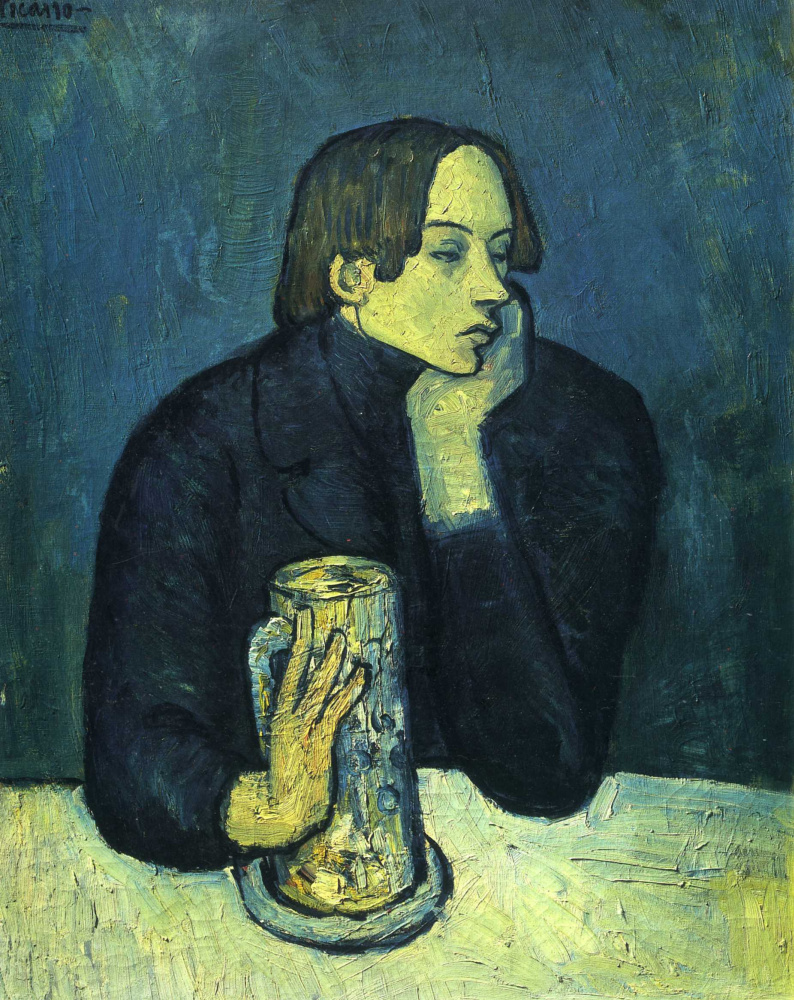The Glass of Beer (Portrait of the Poet Sabartés)
Description of the artwork «The Glass of Beer (Portrait of the Poet Sabartés)»
After the suicide of his friend Carlos Casagemas, 20-year-old Pablo Picasso plunged into deep depression and despondency. He indirectly blamed himself for the death of his friend, as he did not succeed to stop him. This infinite despair, which we see in his paintings, was the beginning of the blue period in the work of Picasso. And the Portrait of the Poet Sabartés is one of the first works of this period. If you compare this picture with other portraits of Sabartés, painted by the artist during his life, and with the posthumous portraits of Casagemas, you can see that the subject of this work is much more similar to the deceased friend.
Jaime Sabartés was one of Pablo Picasso’s closest friends for almost all his life. They were of the same age and shared common views and aspirations. Sabartés, like Picasso, was an artist, but he also wrote prose, and gained great fame as a poet. Jaime was born in Barcelona where he lived for many years. In his youth, he was a frequenter of the famous local café “Four Cats”, where he met Picasso. In 1935, Sabartés moved to Paris at the request of the artist, and until the end of his life he was his personal secretary and manager, engaged, among other things, in organizing exhibitions of the artist.
Jaime Sabartés liked to call himself jokingly “the progenitor of the blueness of the ‘blue’ period.” His first portrait by Picasso combined both the blue color scheme and the feeling of melancholy that would permeate all the artist’s paintings for half a century. Sabartés told how this work was made. He was bored sitting at a table in a Parisian café all alone when Picasso suddenly appeared with a company of friends. It turned out that the artist noticed him earlier and managed to sketch his portrait; certainly, Sabartés did not pose for it, as he was sure that no one paid any attention to him. A few days later, Picasso invited Jaime to his studio and showed him the finished work. Sabartés recalled, “When he put the painting up on the easel, I was astonished to see myself … the spectre of my solitude, seen from without.”


